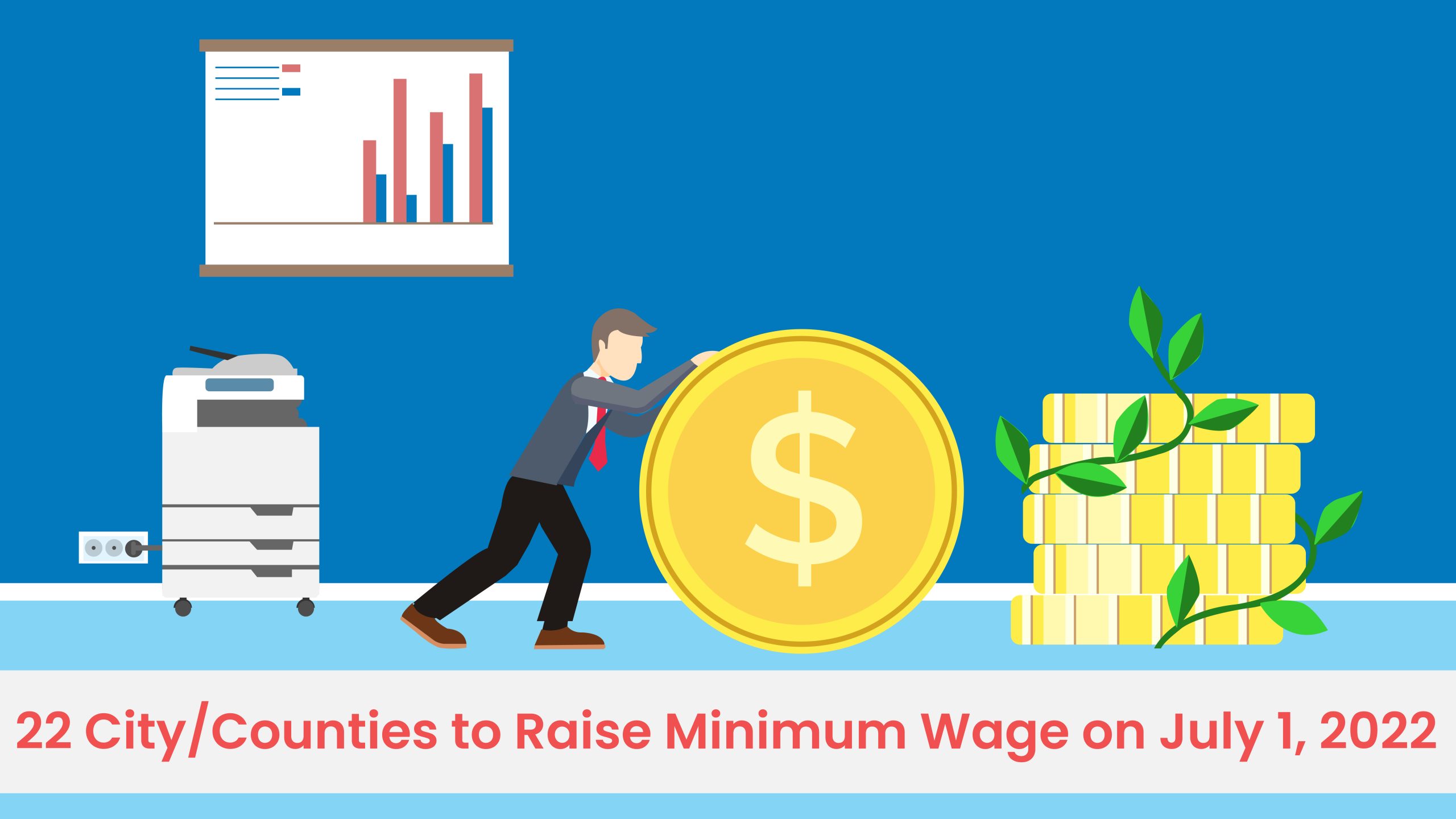
Wages are a crucial part of an employee’s life sphere. The terms and dedication force primarily depend on the wages or paychecks. The last update at the beginning of January 2022 reflected those 21 states raised their minimum wage due to an increase in inflation adjustment.
To be more precise, out of 21 states, 11 chose to opt for the legislation method passed by state lawmakers to raise their state’s wage bar (California, Delaware, Illinois, Maryland, Massachusetts, Michigan, New Jersey, New Mexico, Rhode Island, Vermont, and Virginia).
Nine states chose to stay intact with the inflation adjustment that would fluctuate with the change in prices over time (Arizona, Colorado, Maine, Minnesota, Montana, New York, Ohio, South Dakota, and Washington). And Missouri decided its orientation towards minimum wage order over the ballot measure process. As the minimum wage increases, the chances to protect low-wage workers from exploitation prevails. Low-wage households could benefit from the hike in minimum wage proportions.
City and Counties to Raise Their Minimum Wage
Many states upgraded their status of minimum wage rates at the beginning of January this year. On a mid-yearly basis, the upgrade is taking place again on July 1, 2022. Ensuring that 22 counties, and cities will be introducing updates on the minimum wage rate. Certain states are reassuringly upgrading their minimum wage status to stay intact with the inflation adjustment. The average minimum wage rate hike in July would be roughly 6%, depending on the inflation parameters.
Notable counties and cities in California, Illinois, and Oregon are looking forward to hiking their minimum wage range. The effectiveness of this depends on the number of employees a business handles. And based on that certain minimum wage rate is adapted and implemented in the working system. As per the last update, the District of Columbia has the highest minimum wage rate of $15.2 per hour. $15 is an ideal target state, and the federal system is working towards hiking its minimum wage range.
Tipped and Non-Tipped Workers
The range of minimum wage rates differs for tipped wagers and trainee students. The reason behind such variance would be that tips would efficiently compensate for the employees’ wages and satisfy the minimum wage rate criteria. Tipped workers are usually bartenders, waiters, cooks, and other employees who got tipped for their services. The current federal suggested prevailing minimum wage for tipped workers is $2.13. The regular federal suggested minimum wage is $7.25 per hour, reflecting those employers can claim a top tip of $5.12 per hour. While on the other side, students or interns working on paid basis do also have attained a minimum wage rate.
The remaining state may increase the wage after the November ballot.
How can the Federal Govt and State Govt have different minimum wages?
The Fair Labor Standard Act suggests federal wage and hour and overtime regulations. The current FLSA suggested minimum wage rate is $7.25 per hour. In the federal system of working, the overtime wage rate is one and one-half times a worker’s regular wage rate. Suppose an employee is earned $10 as a minimum wage per hour, then they would earn $15 for extra overtime hours they have worked in a week.
The minimum wage requirements differ for every state. The variance is based on the prevailing wage amount between the federal minimum and the state. Also, the progressive parameters play a key role in deciding the minimum wage rate of a particular state. Yet in most cases, employers cannot pay their employees less than the federal suggested minimum wage rate, that is, $7.25. In certain cases where the state’s minimum wage rate is higher than the federal minimum wage rate, employers are obliged to pay the higher aggregate. Employers must comply with the federal and state-suggested minimum wage rate regulations, and employees have a right to seek rightful pay for their services.
What’s the impact of hiking the minimum wage?
An increase in the minimum wage rate would result in less exploitation of low-wage workers who’re manipulated to work for fewer wages. An increase in the minimum wage rate would improve the standard of living and elevate the families living in poverty for a good reason. The increase could lead to economic growth, leading to better trade channels and charmed recognition. The net outcome of hiking the minimum wage rate would lead to many overqualified workers opting for minimum wage positions.
Another major impact could be inflation. According to the U.S. Inflation Calculator, the annual inflation rate of the United States has increased by leaps and is bound to 8.6% in May 2022. A hike in the minimum wage rate would lead to an increase in production costs following to increase in price



